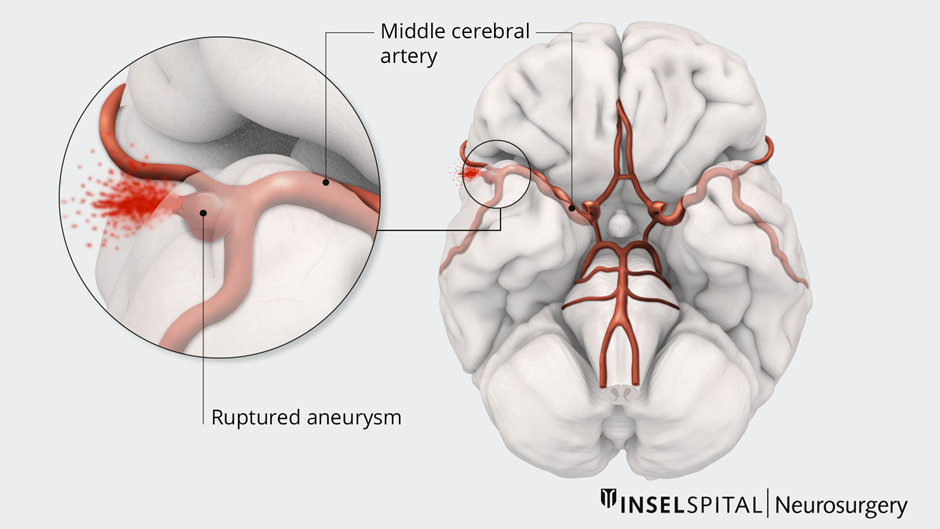A nurse is providing care for a client who is at risk of cerebral aneurysm rupture. Which of the following interventions should the nurse include in the care plan?
Keep lights turned to medium level in the evening.
Maintain the head of the bed between 30 and 45°.
Administer hypotonic intravenous solutions.
Reposition the client every shift.
The Correct Answer is B
Choice A Reason:
Keeping lights turned to medium level in the evening is incorrect. This intervention is aimed at reducing environmental stimuli, which may be appropriate for some patients with neurological conditions to minimize sensory overload and promote rest. However, it is not a specific intervention for preventing cerebral aneurysm rupture.
Choice B Reason:
Maintaining the head of the bed between 30 and 45° is correct. Keeping the head of the bed elevated can help reduce intracranial pressure and decrease the risk of cerebral aneurysm rupture or rebleeding in patients with aneurysmal subarachnoid hemorrhage. This position promotes venous drainage from the brain and helps prevent increases in intracranial pressure.
Choice C Reason:
Administering hypotonic intravenous solutions is incorrect. Hypotonic intravenous solutions have a lower osmolarity than blood plasma and can lead to cerebral edema, which may exacerbate intracranial pressure and increase the risk of cerebral aneurysm rupture. Isotonic solutions, such as normal saline (0.9% NaCl) or lactated Ringer's solution, are typically preferred for fluid resuscitation and maintenance in patients at risk of cerebral aneurysm rupture.
Choice D Reason:
Reposition the client every shift is incorrect. Repositioning the client every shift helps prevent complications associated with immobility, such as pressure ulcers, pneumonia, and venous thromboembolism. While important for overall patient care, repositioning alone does not directly address the risk of cerebral aneurysm rupture.

Nursing Test Bank
Naxlex Comprehensive Predictor Exams
Related Questions
Correct Answer is B
Explanation
Choice A Reason:
"Do panting breaths several times a day." This statement is inappropriate. Panting breaths involve rapid, shallow breathing similar to what a dog does when it's hot. This technique may not be as effective in clearing mucus or promoting lung expansion compared to deep coughing. While panting breaths may have some benefits in promoting ventilation and increasing lung volume, they may not be as targeted or efficient in preventing atelectasis as other techniques such as deep coughing
Choice B Reason:
"Perform deep coughing twice a day." This statement is correct. Deep coughing helps clear mucus and secretions from the airways, reducing the risk of blockages that can lead to atelectasis. It promotes airway clearance and lung expansion, maintaining respiratory function. Regular deep coughing is particularly important for individuals with spinal cord injuries, as they may have impaired cough reflexes or weakened respiratory muscles, increasing their vulnerability to atelectasis.
Choice C Reason:
"Strengthen your chest muscles by performing therapy exercises." This statement is incorrect. While strengthening chest muscles through therapy exercises can be beneficial for overall respiratory health, it may not directly target the prevention of atelectasis. Atelectasis is primarily caused by the collapse of lung tissue due to mucus buildup or reduced lung expansion, rather than weakness of chest muscles. While therapy exercises may have other benefits such as improving respiratory function and endurance, they may not be the most effective strategy for preventing atelectasis in individuals with spinal cord injuries.
Choice D Reason:
"Get plenty of rest throughout the day." This statement is incorrect. Rest is important for overall health and well-being, but it may not directly contribute to the prevention of atelectasis. Inactivity and prolonged bed rest can actually increase the risk of atelectasis by reducing lung expansion and promoting mucus accumulation in the airways. While adequate rest is necessary for recovery and energy conservation, it should be balanced with activities that promote lung expansion and airway clearance, such as deep breathing exercises and mobility.
Correct Answer is C
Explanation
Choice A Reason:
Prothrombin time (PT) is a laboratory test that measures the time it takes for blood to clot is incorrect. While PT may be part of a comprehensive evaluation in some cases, it is not typically the initial diagnostic test performed for a TIA. A TIA is caused by a temporary disruption of blood flow to the brain, often due to an embolus or transient blockage in a cerebral artery, rather than a primary disorder of blood clotting.
Choice B Reason:
Complete blood count (CBC) is incorrect. A complete blood count (CBC) is a common laboratory test that evaluates the cellular components of the blood, including red blood cells, white blood cells, and platelets. While CBC can provide valuable information about hematological conditions such as anemia or thrombocytosis, it is not specific to diagnosing the cause of a TIA. TIA is primarily a vascular event related to transient ischemia in the brain rather than a disorder of blood cell counts.
Choice C Reason:
Computerized tomography angiography (CTA) is appropriate. CTA is a non-invasive imaging test that combines computed tomography (CT) scanning with contrast dye to visualize blood vessels throughout the body, including those in the brain. CTA can help identify any blockages, narrowing, or abnormalities in the blood vessels supplying the brain, which may be contributing to the TIA. It provides detailed images of the blood vessels' structure and can help guide further management and treatment decisions.
Choice D Reason:
Transesophageal echocardiogram (TEE) is inappropriate. Transesophageal echocardiogram (TEE) is an imaging test that provides detailed images of the heart and major blood vessels using sound waves. While TEE may be indicated in some cases of TIA to evaluate for potential cardiac sources of emboli (blood clots), such as atrial fibrillation or cardiac valve abnormalities, it is not typically the first-line diagnostic test performed in the emergency department setting for evaluating a TIA. Initial imaging studies such as CTA or magnetic resonance imaging (MRI) of the brain are usually prioritized to assess for acute changes in cerebral blood flow and potential causes of the TIA.

Whether you are a student looking to ace your exams or a practicing nurse seeking to enhance your expertise , our nursing education contents will empower you with the confidence and competence to make a difference in the lives of patients and become a respected leader in the healthcare field.
Visit Naxlex, invest in your future and unlock endless possibilities with our unparalleled nursing education contents today
Report Wrong Answer on the Current Question
Do you disagree with the answer? If yes, what is your expected answer? Explain.
Kindly be descriptive with the issue you are facing.
